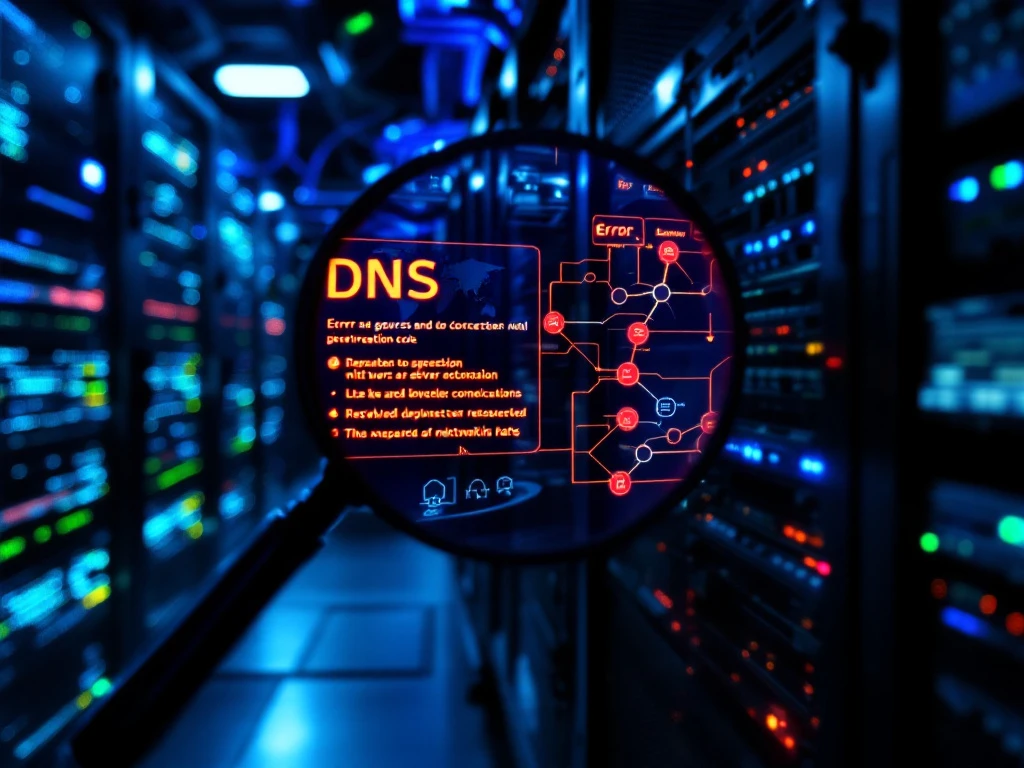How do I troubleshoot DNS issues?

Troubleshooting DNS issues involves a systematic approach of identifying and resolving problems related to the Domain Name System infrastructure. When experiencing website unavailability or network connectivity problems, first check your DNS configuration by verifying nameserver settings, examining DNS records for errors, and testing resolution using diagnostic tools like nslookup or dig. Clear your local DNS cache, verify your DNS server status, and ensure your records have properly propagated. At Falconcloud, we provide comprehensive DNS management services with our 99.9% SLA reliability, helping you maintain stable and efficient domain name resolution across our global data centres.
Understanding DNS issues and their impact on your network
The Domain Name System (DNS) functions as the internet's phonebook, translating human-readable domain names into IP addresses that computers use to identify each other. When DNS issues arise, they can cause widespread disruption to your network infrastructure and online services. Common symptoms include websites becoming inaccessible, emails failing to deliver, or applications unable to connect to their required resources.
DNS problems can severely impact business operations by preventing customers from accessing your websites, disrupting cloud-based applications, and hampering internal communications. For businesses relying on digital infrastructure, even brief DNS disruptions can lead to significant productivity losses and potential revenue impact.
Our free DNS management service at Falconcloud integrates seamlessly with our cloud infrastructure, allowing you to manage your domain records through our control panel while benefiting from our globally distributed network across Dubai, New Jersey, Toronto, Amsterdam, Istanbul, Sao Paulo, and Almaty data centres.
What are the most common DNS issues you might encounter?
DNS issues typically manifest in several common forms that can affect your network connectivity and website availability. Understanding these problems is essential for effective troubleshooting.
- DNS resolution failures: When your system cannot translate domain names to IP addresses, often resulting in "Server not found" errors
- Name server issues: Problems with the authoritative DNS servers responsible for your domain
- Propagation delays: The time required for DNS changes to spread across the global DNS network (typically 24-48 hours)
- DNS cache poisoning: Security vulnerabilities where incorrect DNS information is introduced into the cache
- Misconfigured DNS records: Errors in A, CNAME, MX, or other record types
- TTL (Time-to-Live) issues: Inappropriate TTL settings causing either excessive caching or too frequent lookups
These issues manifest differently depending on your environment. In cloud environments like our Falconcloud infrastructure, DNS problems might affect virtual machine connectivity, load balancer functionality, or access to storage solutions. For end-users, these issues typically appear as website unavailability or application connection errors.
How do DNS issues affect cloud-based applications?
DNS issues can critically impact cloud-based applications by disrupting the fundamental connectivity that cloud services depend on. When DNS resolution fails, cloud applications cannot properly communicate with their required resources, resulting in degraded performance or complete service outages.
For virtual machines hosted on our vStack Cloud or VMware Cloud platforms, DNS problems can prevent proper connectivity between components, disrupt access to storage volumes, or break connections to external resources. Our Content Delivery Network (CDN) relies heavily on proper DNS functioning to direct users to the nearest edge location, meaning DNS issues can undermine the performance benefits of distributed content delivery.
Private networks and direct connections within our Falconcloud infrastructure also depend on functional DNS services for name resolution between resources. When DNS issues occur, even resources within the same Virtual Private Cloud (VPC) may struggle to communicate effectively, compromising the reliability of your entire cloud deployment.
What tools can you use to diagnose DNS problems?
Several powerful diagnostic tools can help identify and troubleshoot DNS issues. These utilities provide insights into different aspects of the DNS resolution process.
| Tool | Function | Usage Example |
|---|---|---|
| nslookup | Queries DNS servers for resource records | nslookup example.com |
| dig | Detailed DNS lookup with comprehensive output | dig example.com |
| ping | Tests network connectivity and response time | ping example.com |
| traceroute/tracert | Shows network path to target domain | traceroute example.com |
| host | Simple DNS lookup tool | host example.com |
When interpreting results, look for inconsistencies in returned IP addresses, unexpected NXDOMAIN responses (indicating the domain doesn't exist in DNS), or significant delays in resolution. These can point to specific DNS issues requiring attention. Our Falconcloud control panel also provides built-in DNS verification tools to help diagnose issues with domains managed on our platform.
How can you fix common DNS resolution errors?
Resolving DNS issues requires a methodical approach targeting the specific problem identified. Start by clearing your local DNS cache to eliminate any outdated or incorrect information stored on your system. On Windows, use the command ipconfig /flushdns, while on macOS use sudo killall -HUP mDNSResponder.
Next, verify your DNS server settings are correct. Temporarily switching to alternative DNS servers like Google's (8.8.8.8) can help determine if the issue is with your current DNS provider. If you're managing DNS through our Falconcloud control panel, ensure all record configurations are accurate, paying particular attention to:
- A records pointing to the correct IP addresses
- CNAME records with valid destination domains
- MX records configured correctly for email delivery
- Appropriate TTL values for your update frequency needs
For propagation issues, understand that DNS changes may take 24-48 hours to fully propagate globally. Using our Falconcloud DNS management features provides the advantage of access to our distributed global network, potentially reducing propagation times compared to other providers.
If issues persist after these steps, check name server configurations at your domain registrar to confirm they point to the correct DNS servers, and consider temporarily disabling any firewall rules that might block DNS traffic on port 53.
Key takeaways for maintaining healthy DNS configurations
Maintaining reliable DNS infrastructure requires proactive management and adherence to best practices. Regularly audit your DNS records to ensure they remain current and accurate as your infrastructure evolves. Implement redundant DNS servers to eliminate single points of failure, and consider using secondary DNS services for critical domains.
Set appropriate TTL values based on your specific needs—shorter TTLs allow for more rapid changes but increase lookup traffic, while longer TTLs improve caching efficiency but slow down propagation of updates. For critical infrastructure, we recommend TTLs between 300-3600 seconds (5 minutes to 1 hour).
Leverage monitoring tools to detect DNS issues before they impact users, and maintain detailed documentation of your DNS configuration to simplify troubleshooting when problems arise. Our Falconcloud DNS management services provide built-in monitoring and simplified record management through our intuitive control panel.
By taking advantage of our globally distributed infrastructure with 99.9% SLA reliability, you can ensure your DNS remains resilient and performant. Our predictable billing structure means you only pay for active services, while our scalable infrastructure allows you to adjust resources as your DNS requirements grow, all managed through our comprehensive control panel or API.


